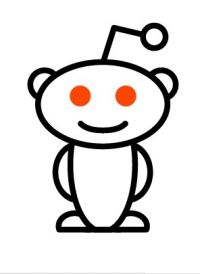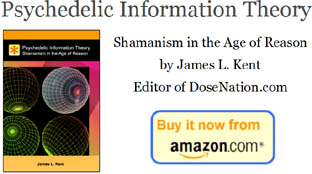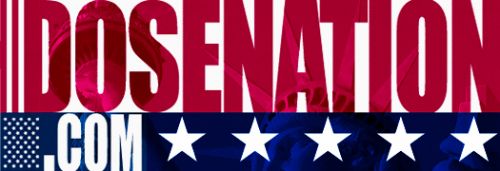Nature editor Noah Gray asked four neuroscience bloggers to write an opinion piece for the September issue of Nature Reviews Neuroscience, called "The neurobiology of psychedelic drugs: implications for the treatment of mood disorders." Here are the results:
Distorted perceptions and an altered state of mind: two reasons why psychedelics have always attracted not only fascination, but also controversy for decades. A recent Perspective in Nature Reviews Neuroscience entitled "The neurobiology of psychedelic drugs: implications for the treatment of mood disorders", by Franz Vollenweider & Michael Kometer explores why there is a renewed interest in the clinical potential of psychedelics for treating mental disorders, after nearly a 40 year gap in clinical experimentation. Anticipating a significant interest in this topic, Nature Publishing Group has made this manuscript freely accessible for 1 month. In addition, we offer a four-part series of essays by some of the best neuroscience bloggers to help you explore the literature and discuss the most important aspects:
1.) The secret history of psychedelic psychiatry by Moheb Costandi
2.) Serotonin, Psychedelics and Depression by Neuroskeptic
3.) Ketamine for Depression: Yea or Neigh? by The Neurocritic
4.) Visions of a psychedelic future by Vaughan Bell
[Thanks Mo!]
Not psychedelic mushrooms, and not poisonous either, just located in really treacherous places:
The victims have died after falling into rocky crevasses and gorges or from similar physical mishaps, rather than from inadvertently eating poisonous fungi.
Authorities said an early and bountiful mushroom harvest in the Alpine valleys of northern Italy had attracted more people than usual to scour the woods and forests in search of succulent funghi to bring to the dinner table.
Many of them were unfit and ill-equipped, venturing into remote areas without proper footwear or rainproof clothing, and without checking weather forecasts.
Collecting wild mushrooms as autumn approaches is an extremely popular pastime in Italy.
[Thanks Dropper!]
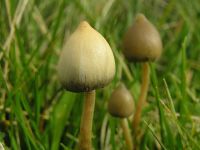 |
At a time when we're being encouraged to have our say politically, it seems appropriate to have a little Magic Mushroom flashback. The active ingredients of Psilocybe mushrooms (psilocybin and psilocin) were made schedule 1 drugs in the UK, in 1971, meaning possession and supply could land you a very long prison sentence, on a par with cocaine and heroin. Due to a legal loophole however, possession of the fresh mushroom remained legal and soon after the turn of the millennia head shops across the UK had begun selling them in earnest.
Picking the native UK shroom, the Psilocybe semilanceata (better known as the Liberty Cap), largely remained the preserve of the aficionado, and it was the Psilocybe cubensis species (Mexican, Thai and Colombian strains amongst others) that took pride of place in the fridges of the head shops. It was estimated that the annual turnover of this legal trade was 1,000,000 pounds sterling per annum, raking in a cool 175,000 pounds over the same period in VAT for the government (RAND, 53).
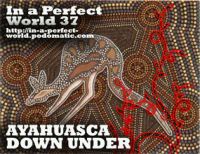 |
Experiential journalist Rak Razam is interviewed by anthropologist Robin Rodd from James Cook University in Queensland, Australia, on all things ayahuasca, Down Under. What are the cultural uses of ayahuasca in Australia and how does it relate to other entheo cultures in South America and elsewhere in the world? Without an unbroken shamanic lineage, Aussiehuasqueros have had to stitch their shamanic practice from multiple sources, sometimes united in a cultural synergy for group shamanizing. The hybridization of not just ayahuasca, but of Amazonian shamanism itself is potent in the Australian counterculture as it births a new hybrid modality suited to the conditions on the land. But what of the cultural archetypes, do they remain the same? How do Australian aboriginal spirits and energies affect the mix? Is there something activating in the vibrational frequency of the Australian Land itself, its songlines and energetic grid, and how does all of this tie into other indigenous prophecies of these changing times? A personal exposition from Razam on his own journey and collective journey in the culture...
The website Reddit, which is owned by Conde Nast, were told by their parent company that they were not to run ads in favor of prop 19 because Conde Nast "Does not want to profit from this situation". In response, Reddit has decided to run the ads for free.
The social news site Reddit staged a mini-rebellion Friday, deciding to run ads for a pro-marijuana legalization campaign for free after Conde Nast executives ruled against taking payment for the ads.
The ads from the Just Say Now group support passage of California’s Proposition 19, which would largely legalize the use of marijuana. After inquiries from the group, Conde Nast executives ruled against running the ads on the user-driven Reddit, a tiny unit of the Conde Nast publishing concern (which also owns Wired and Wired.com). Conde Nast is best known as the publisher of magazines such as the New Yorker, Vanity Fair and Vogue.
Facebook has famously banned pro-pot advertisements from its service.
[Thanks Seth!]
The Beast File does an excellent, visually accompanied report on MDMA.
3,4-Methylenedioxymethamphetamine thats MDMA, the drug used illicitly as ecstasy was first created completely by accident in 1912. Its initial foray into the world of medicine was cut short when people started using it recreationally, leading to it being banned as part of the War on Drugs. But doctors continued to campaign to be able to use it in medical research, and recent developments have shown the drugs potential for use in conjunction with psychological counselling to treat post-traumatic stress disorder, trauma and anxiety.
HUNGRY BEAST airs in Australia on the ABC, 9PM Wednesdays. More stories: www.abc.net.au/hungrybeast
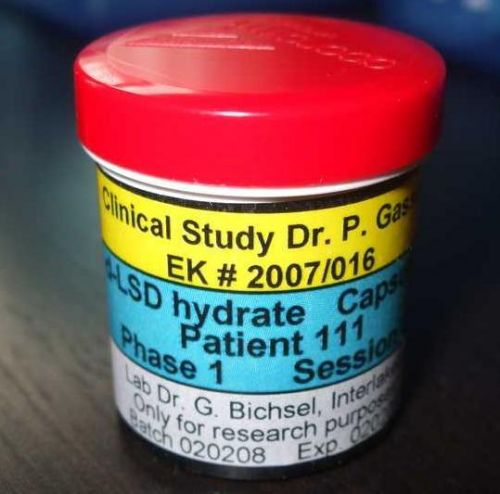
This is what "the first legitimate therapeautic LSD shipment in over 35 years" looks like apparently.
[Thanks, Mason!]
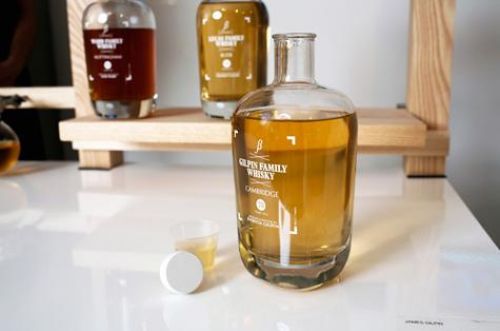
Over at We Make Money Not Art, we find a recent interview with designer James Gilpin, a type 1 diabetic whose new project, Gilpin Family Whisky, attempts to answer the question:
Is it plausible to suggest that we start utilizing our water purification systems in order to harvest the biological resources that our elderly already process in abundance? In James Gilpin's scenario, sugar heavy urine excreted by patients with diabetes would be used for the fermentation of high-end single malt whisky for export.
It's so crazy, it just might work! From the interview itself:
How did you approach the diabetic patients and ask them for their urine? How did they react to your request?
I began by working with people that I know personally so my grandmother was the first candidate to sign up for the trials. I went through lots of my process with her and worked out where people were likely to feel uncomfortable. This helped to avoid lots of awkward moments.... I then heard a story about a pharmaceutical factory based in a community of elderly people and they would send representatives door to door exchanging cushions and soft toys for tubs of urine. The factory would then take the urine and process it to remove all of the chemicals that they had originally been selling their customers on the shelves of pharmacies. I took this model and adapted it for my own purpose....
Can you describe the process of turning urine into whisky? Did you do it yourself or did you just bring the 'ingredients' to a brewery?
So the urine is cleaned using the same techniques that we use for purifying our mains water stock. This process itself shares much of the distillery process. The thing that made life easier is that the sugar molecules are large and will form crystals which can then be removed and purified separately.
This sugar is added to the mash stock and used to accelerate the fermentation process. This is sort of a bit of a cheat as traditionally the sugars would be made form the starches in the mash. During the brewing process I make a clear alcohol sprit. This is again not the traditional method for making whisky but I adopted a commercial technique for cheap whisky and used whisky blends which I added to the sprite to give color, taste and viscosity.
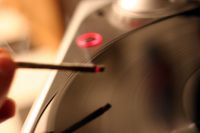 |
A sample chapter from 'The Mad Artist', which forms a self-contained cannabis 'experience report' from 1977. Back in those days, art students did nothing except get stoned all the time, dope was 7.50 pounds ($11.50) a quarter ounce and the cutting edge music was jazz-rock fusion.
At the prescribed hour, I knocked on Sam's door, and it was opened very cautiously by Big Jim, who gave a big chuckle when he saw it was me. Inside the whole gang were assembled, bright and eager like animals about to be fed. Sam was sat on the sofa, unwrapping the gear on a black lacquered coffee table. Next to him was Eric, a smoking mate from outside the house, who was busy assembling a set of collapsible brass scales that came in an indigo velvet-lined box. Race, Fiona and Sonya were languishing on a pile of cushions and beanbags over by the bay window, looking very decadent and bohemian. Gordon was sat cross-legged on the floor on the other side of the coffee table, a meditative expression on his face. Jim returned to his armchair on the right-hand side of the room, and I picked up a spare big cushion and sat next to him.
Jim and I chatted about our new rooms, with him especially pleased by the coup he'd pulled off in securing the big one next door. Meanwhile Sam was halving the slim oblong ounce of Leb with a serrated knife. He put a half in each pan of the scales, found one slightly heavier, so he broke off a corner, transferred it and found they matched. Then he split one of the halves into two quarters, which matched exactly at the first attempt. Sam was obviously a real expert at this trade. The two quarters became four eighths, two of which were passed to Race and Gordon respectively, and the other two further divided into sixteenths for Fiona, Sonya and Jim. The other half ounce was split into a quarter for Eric, an eighth for me, and the rest went into Sam's tin.
'The Alphabet Wood' -- the first five chapters of 'The Mad Artist' -- is also available to read.
|

Recently @ DoseNation
|
|





